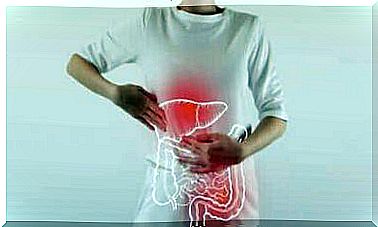Somatization: Corona Symptoms Without Being Infected
Patients with a somatization disorder experiment with coughing and respiratory problems, even if they are not infected with the new SARS-CoV-2 coronavirus. Find out more about this phenomenon today.

The somatization produced a very interesting phenomenon for psychologists, the typical symptoms of a disease, even if people affected do not suffer from it. Most of these complaints arise as a result of the fear of suffering from a specific illness.
In almost every country in the world we are currently in a crisis situation caused by the new pathogen SARS-CoV-2. However, this pandemic not only results in numerous infections, it also stirs up great fear around the world.
Fearful people are particularly at risk of suffering from somatization disorder. We explain below what it is and how it comes about.
Somatization: an interesting phenomenon
Somatization disorder occurs when a psychological problem involuntarily leads to physical symptoms. This means that affected people have physical complaints that indicate a certain disease, even though they do not suffer from this disease at all.
We know today that body and mind are not separate from each other. There is a very close connection and interaction and therefore it can also happen that emotional or psychological problems are somatized by persistent physical complaints.
Most affected people are very worried and suffer from fear and stress. The fear then leads to physical complaints for which, despite careful examinations, no physical causes can be found.
Often this disorder is confused with hypochondria. But the difference is that the hypochondriac in general has an immense fear of falling ill. You are panicked of any disease and don’t need real external factors to experiment symptoms.
However, somatization disorders often occur in a situation that feeds fear. The current corona pandemic is a good example of this. The constant inundation with information and the strict measures are the triggers of the fear, which then leads to physical discomfort.

The main characteristics
Experts point out that various aspects must be observed in order to be able to recognize a somatization disorder: First, it must be ruled out that the patient is actually ill. In addition, it is important to assess the general health of the person concerned.
People with somatization disorder tend to be very nervous and anxious. Most confirm that they often think of the disease and are afraid of getting it. They are usually very well informed about the situation.
Usually, when COVID-19 is somatized, several symptoms of this disease are present. These cause even more concern for those affected and affect their lives.
Somatization of COVID-19
The new coronavirus provokes a number of symptoms that are very unspecific and can easily be mistaken for other diseases. Most infected people have a high fever, difficulty breathing, and cough.
In addition, many cases were documented in which there was a loss of the sense of smell and taste. Because it is a viral infection, muscle pain and general fatigue are often characteristic as well.

Somatization causes those affected to suffer from these typical symptoms, even if they are not infected with SARS-CoV-2 at all. You have a cough, headache, and other ailments. In some cases, you may even feel your body temperature increased.
But when you measure a fever with a thermometer, your body temperature is quite normal. The rest of the symptoms cannot be measured objectively, so it is more difficult to prove that they were not caused by an infection.
In times of crisis we have to be aware that somatization disorders are very common. Of course, it is important to act according to the protocol and get a medical examination in the event of possible symptoms that indicate COVID-19. The doctor will then determine whether it is actually an infection with SARS-CoV-2 or whether there is a somatization disorder.









